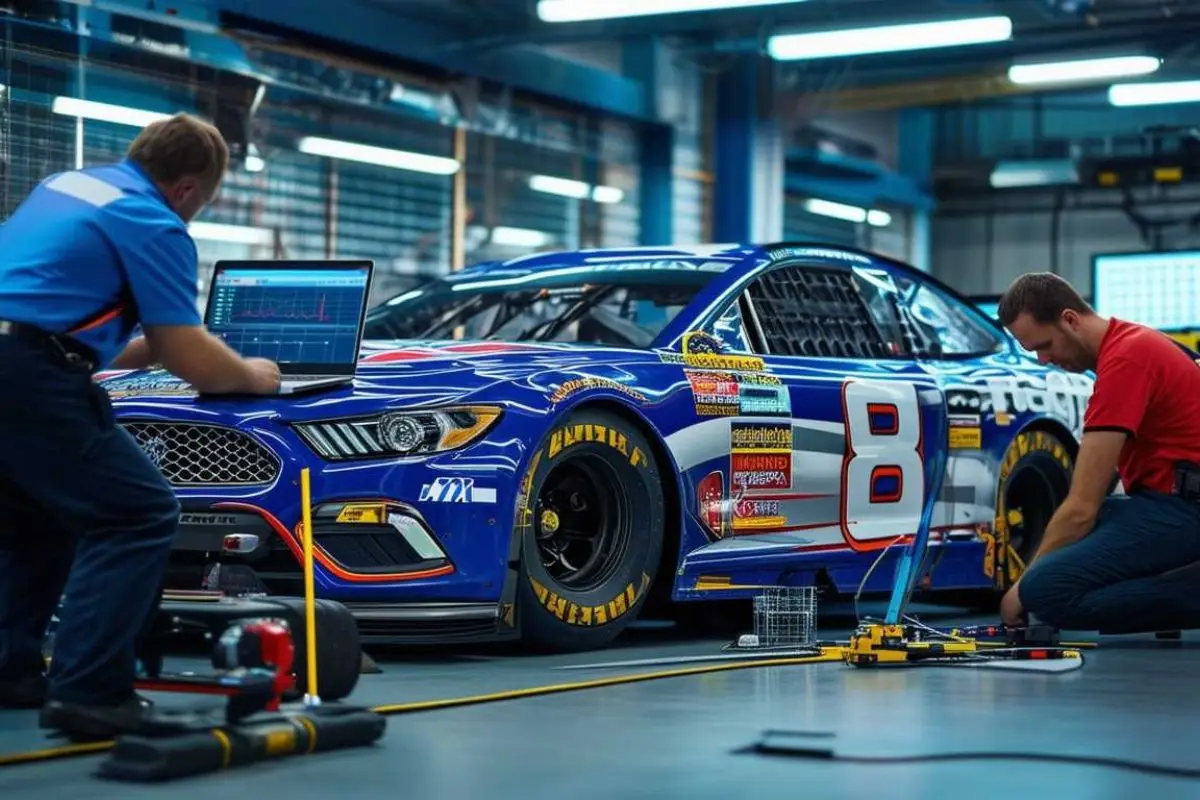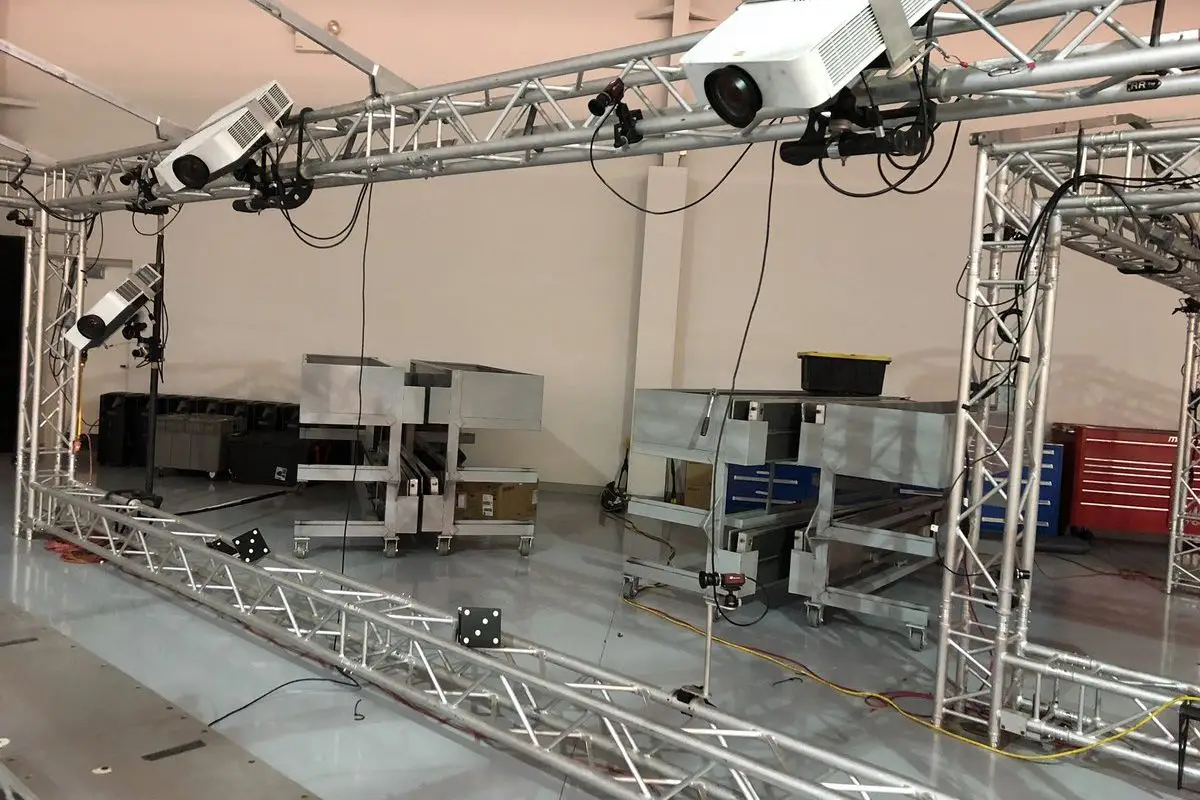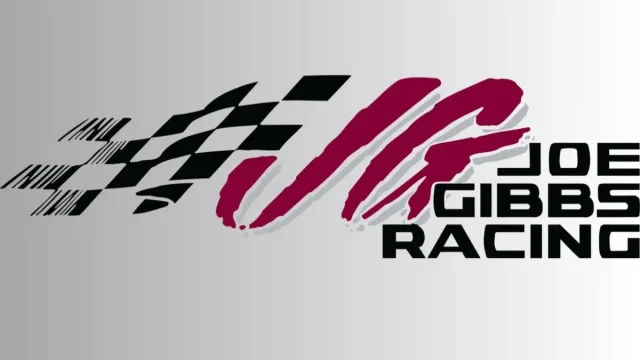Why Do NASCAR Cars Cover Windshields: NASCAR cars cover their windshields primarily to improve the precision of inspections and guarantee competitive fairness. This practice minimizes external airflow dynamics that could impact the accuracy of vehicle dimension assessments. By using opaque materials, teams facilitate more effective scanning by Optical Scanning Stations (OSS), which rely on laser technology for precise measurements.
This approach marks a major evolution in the inspection process, aimed at upholding the sport’s integrity. Particularly, these protocols have been essential in addressing compliance challenges, particularly due to recent infractions. Exploring deeper into this topic reveals the intricate relationship between technology, regulation, and competition.
Key Highlights
- Windshields are covered to ensure uniform scanning surfaces for accurate measurements during inspections.
- Covering prevents external airflow dynamics from affecting vehicle performance and inspection outcomes.
- The Optical Scanning Station (OSS) requires opaque surfaces for precise dimension verification.
- Compliance with NASCAR’s specifications is crucial for maintaining competitive parity among teams.
- Recent infractions highlight the importance of covering windshields to uphold inspection integrity.
Joe Gibbs Racing’s Insight into NASCAR Inspections
Joe Gibbs Racing’s recent exploration into NASCAR’s inspection process highlights the intricate relationship between technology and regulation in the sport. By providing fans with a behind-the-scenes look at why windshields are covered during inspections, JGR reveals how these practices are not merely ceremonial but deeply rooted in the sport’s commitment to fairness and compliance.
The video shared on their social media platform emphasizes the complexity of modern inspections, which have evolved considerably from NASCAR’s early days. Covering windshields serves a critical purpose in the inspection process. It minimizes the influence of external factors, such as airflow dynamics, which could compromise the integrity of the evaluation.
This careful attention to detail guarantees that every vehicle adheres strictly to NASCAR’s stringent specialized specifications. Additionally, it reflects a broader trend in motorsport where advanced technologies and data analytics play pivotal roles in maintaining competitive parity.
As JGR demonstrates, the evolution of inspection protocols encapsulates decades of innovation, revealing that what may appear as a routine procedure is, in fact, a sophisticated interplay of engineering and regulation.

A History of NASCAR Inspections
The evolution of NASCAR inspections reflects the sport’s ongoing struggle to balance innovation with regulatory compliance. In the early years of NASCAR, particularly the 1940s and 1950s, inspections were straightforward and focused on basic components such as engines, shocks, and fuel tanks. The limited technology available made it easier to maintain compliance, resulting in quick inspections.
However, as racing technology advanced, teams developed increasingly sophisticated methods to manipulate vehicle designs for competitive advantage, prompting NASCAR to improve its inspection procedures.
By the 1960s, the introduction of templates marked a notable shift in inspection methodology, enabling officials to verify car dimensions more accurately. The growing complexity of aerodynamic designs in the 1970s and 1980s further necessitated this evolution.
The fourth-generation car introduced in 1992 brought highly modified body panels into focus, requiring inspectors to employ templates across the entire car to guarantee adherence to NASCAR’s stringent shape standards.
In 2003, NASCAR standardized car bodies across manufacturers with a common template, which aimed to level the playing field while allowing for creative design flexibility.
However, the fifth-generation car in 2007 revolutionized the process with an all-encompassing, claw-like template that eliminated lopsided designs. This commitment to precision continued into 2013 with the sixth-generation car, integrating laser inspections alongside traditional methods.
View this post on Instagram
The history of NASCAR inspections demonstrates a relentless pursuit of fairness and adherence to regulations in an environment ripe for innovation.
Optical Scanning Station (OSS) and the Role of Covered Windshields
Utilizing advanced technology, NASCAR’s Optical Scanning Station (OSS) has transformed the landscape of vehicle inspections, ensuring unprecedented accuracy in measuring car dimensions. This cutting-edge system employs laser technology to capture detailed measurements of each vehicle’s shape.
However, the efficacy of the OSS is contingent upon the removal of transparent surfaces, such as windshields and rear windows, which obstruct the lasers’ ability to scan effectively. To mitigate this limitation, teams cover their windshields and rear windows with opaque materials during the inspection process.
This practice provides a uniform surface that allows the OSS to yield precise measurements, thereby eliminating any potential for competitive advantage through hidden modifications. By ensuring that the scanning process is consistent and reliable, NASCAR cultivates a fair environment for all teams, as emphasized by Joe Gibbs Racing.
The introduction of the OSS marks a notable evolution from traditional inspection methods that relied heavily on visual assessments and rudimentary measurements. The OSS system’s precision enables NASCAR officials to detect even the smallest deviations from prescribed specifications.
Consequently, teams are compelled to present vehicles that adhere strictly to the rulebook, reinforcing the integrity of the sport.

Notable Infractions and the Evolution of Inspection Protocols
In recent years, notable infractions in NASCAR have highlighted the ongoing challenges associated with maintaining compliance in an increasingly complex environment. The rise of advanced technology has made inspections more rigorous, but it has also led to considerable penalties for teams that fail to adhere to the rules. A striking example occurred in 2022 when Joe Gibbs Racing‘s Denny Hamlin and Kyle Busch had their impressive 1-2 finish at Pocono Raceway nullified due to dimensional infractions identified during post-race inspections.
This incident not only shifted victory to Chase Elliott but also emphasized the importance of precise compliance in a sport that is continually evolving.
As NASCAR adopts innovations like the Next Gen car, the inspection protocols must adapt accordingly. Key developments include:
- Introduction of the Optical Scanning Station (OSS)
- Increased emphasis on composite materials and advanced engineering
- Heightened examination during pre- and post-race inspections
- Development of more sophisticated measurement techniques
- Continuous education and training for officials and teams
These advancements indicate NASCAR’s commitment to preserving the integrity of the sport. Each instance of a covered windshield during inspections serves as a reminder that the examination behind the scenes is pivotal.

News in Brief: Why Do NASCAR Cars Cover Windshields?
The practice of covering windshields in NASCAR serves as a tactical measure to maintain the integrity of the inspection process. Joe Gibbs Racing’s insights highlight the significance of the Optical Scanning Station (OSS) in ensuring compliance with evolving regulations. This approach not only mitigates the risk of infractions but also reflects the continuous adaptation of inspection protocols in response to technological advancements and competitive dynamics within the sport. Ultimately, these measures safeguard fair competition and uphold NASCAR’s standards.
ALSO READ: NASCAR Tech Inspection: The Truth Behind Car Legality
